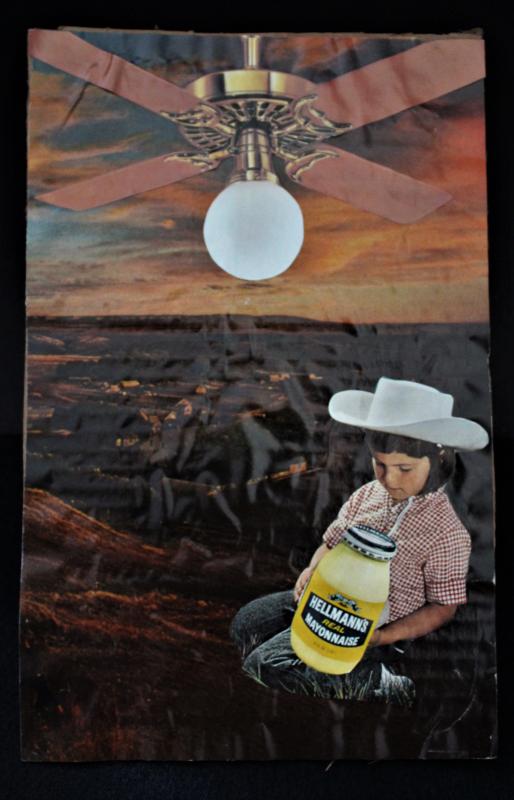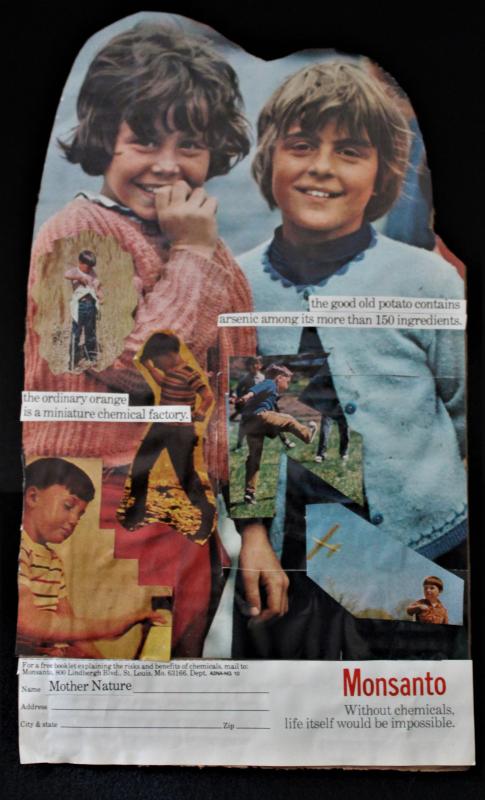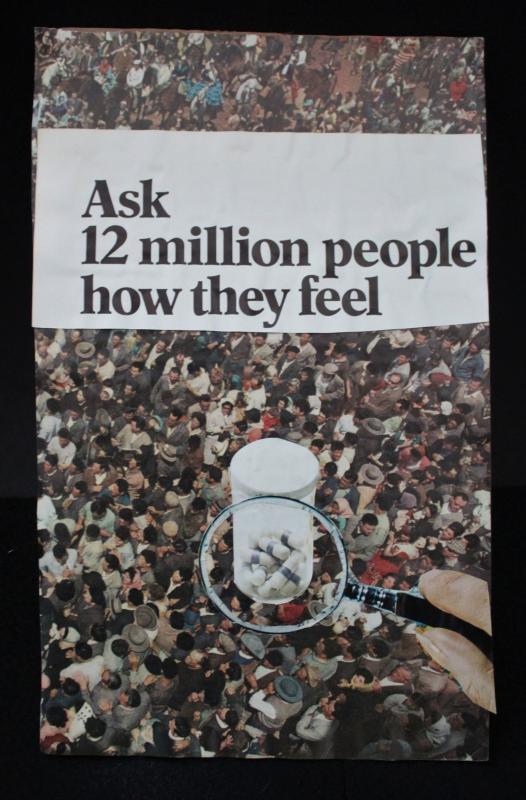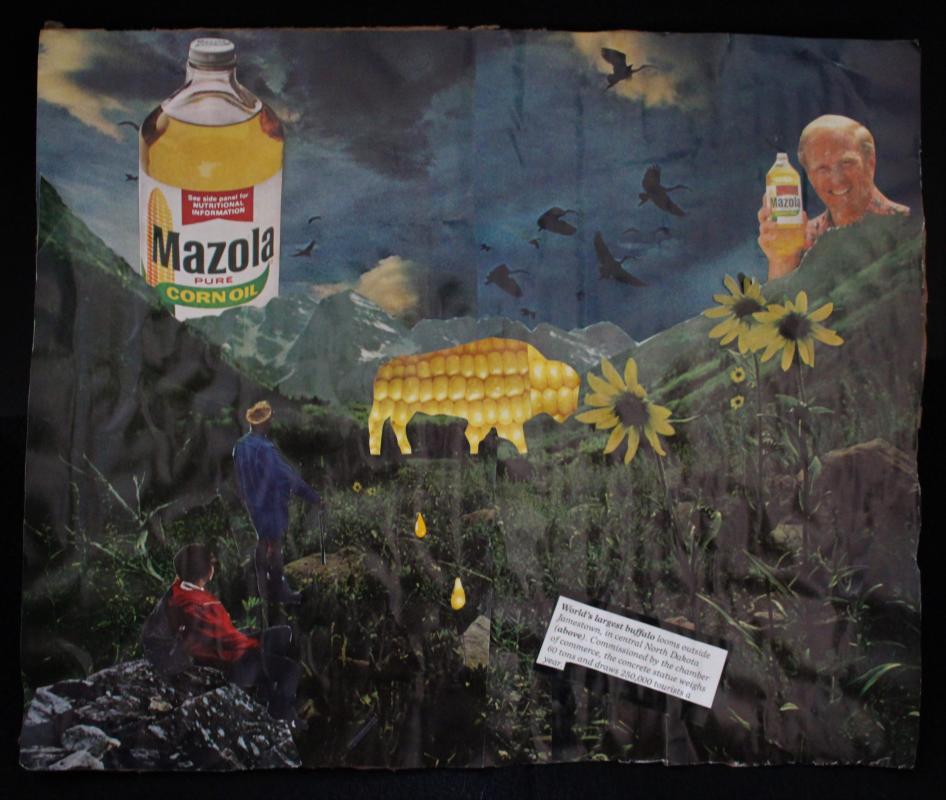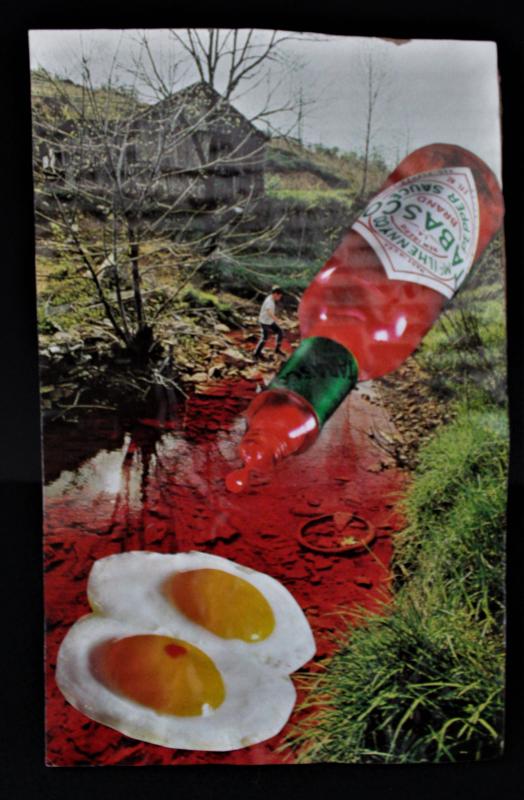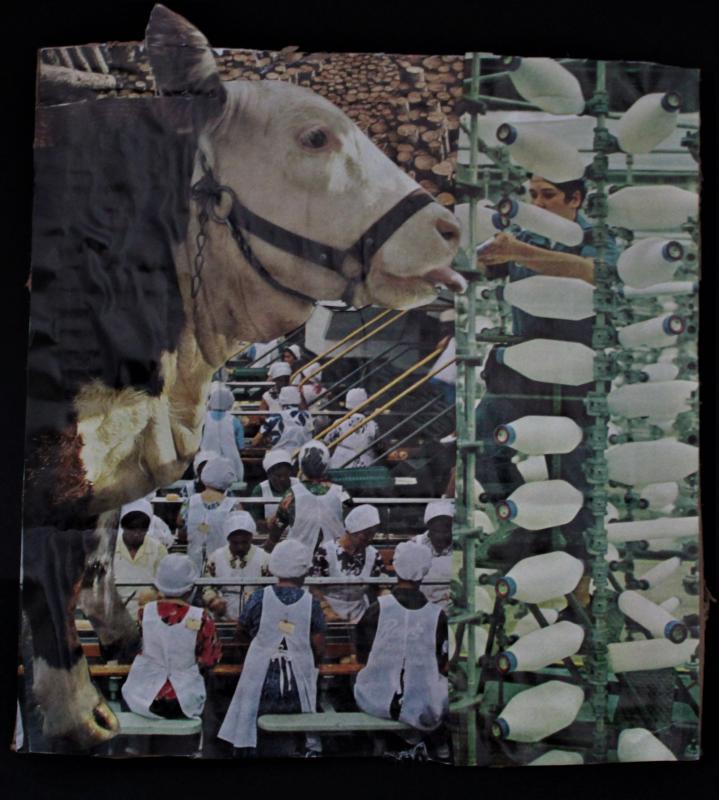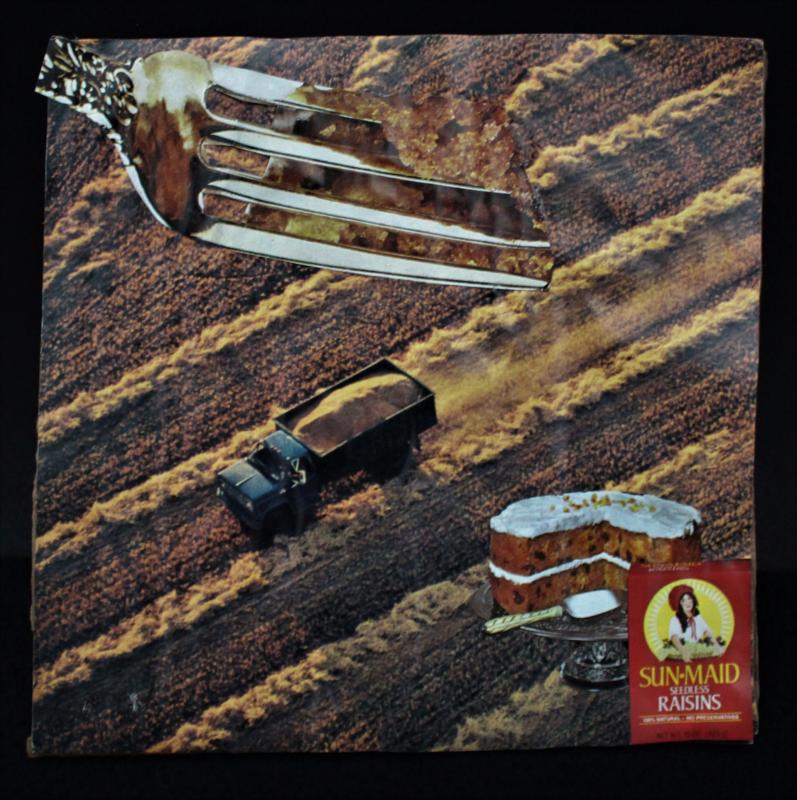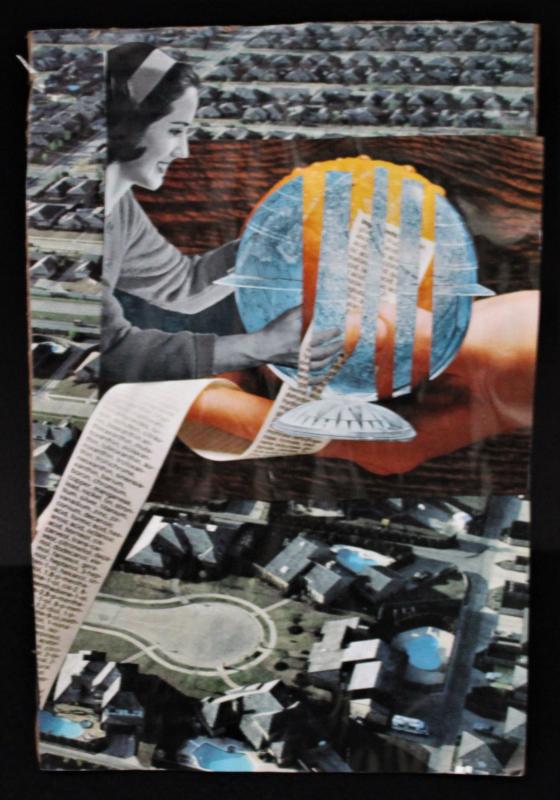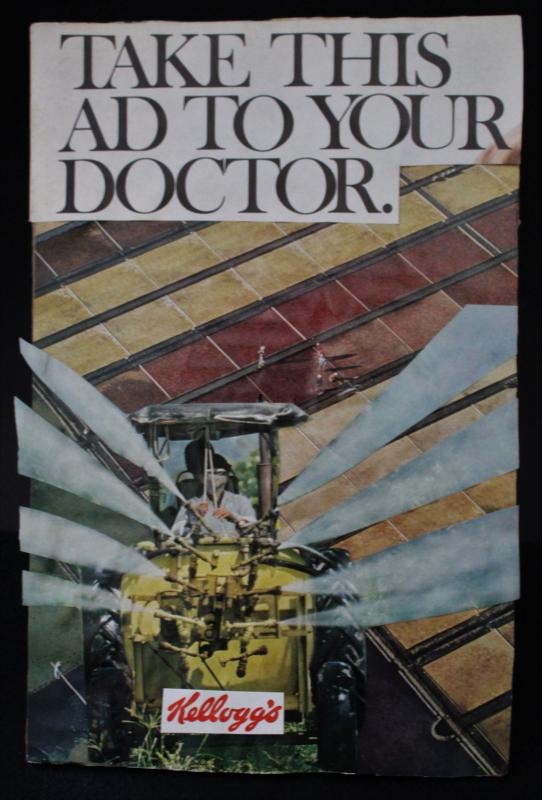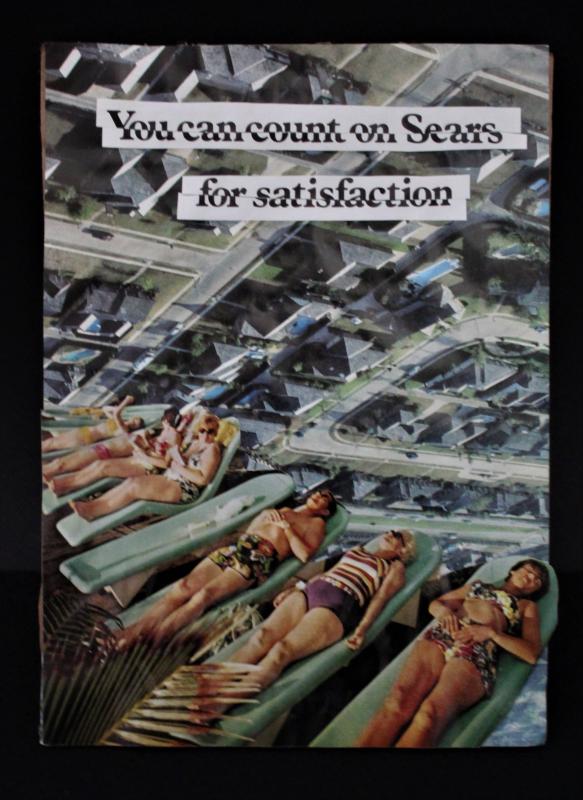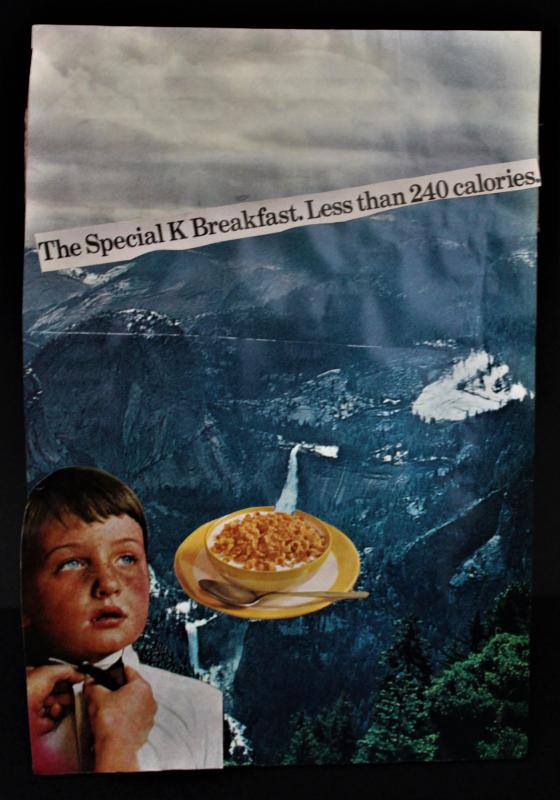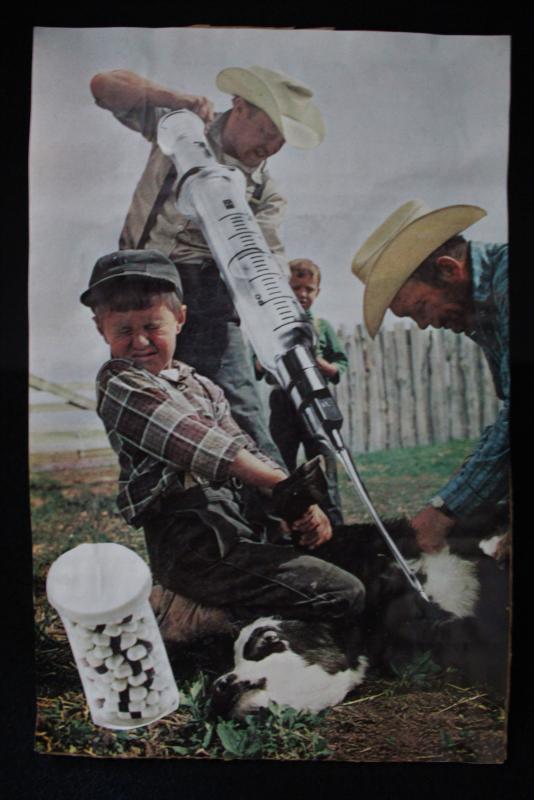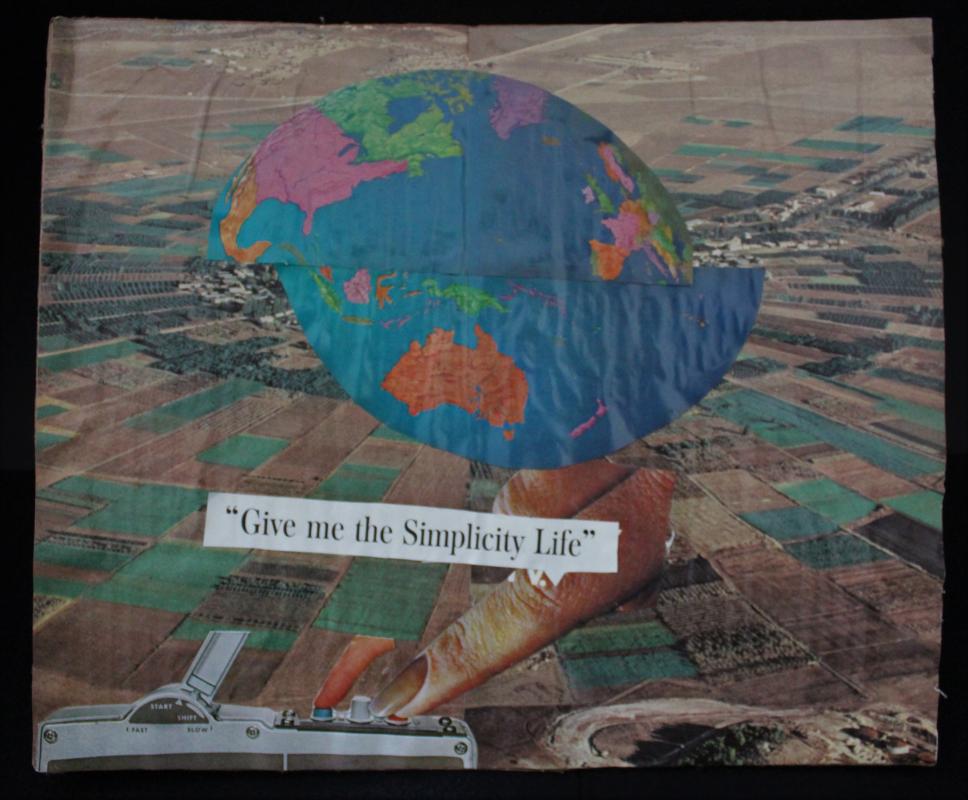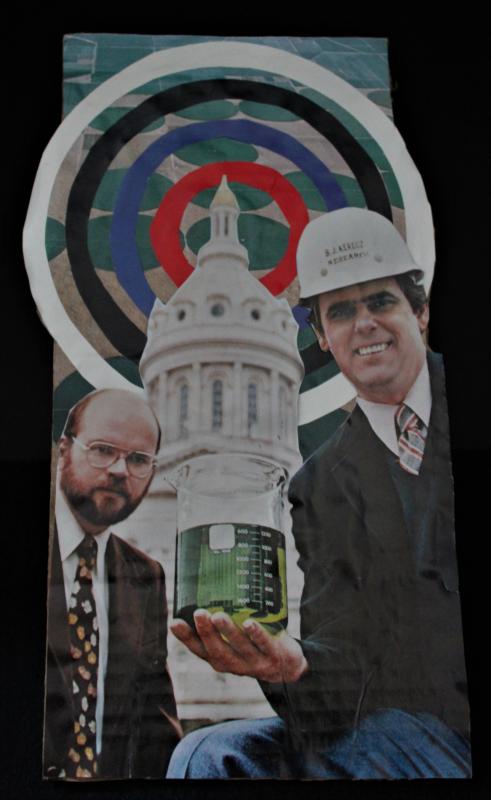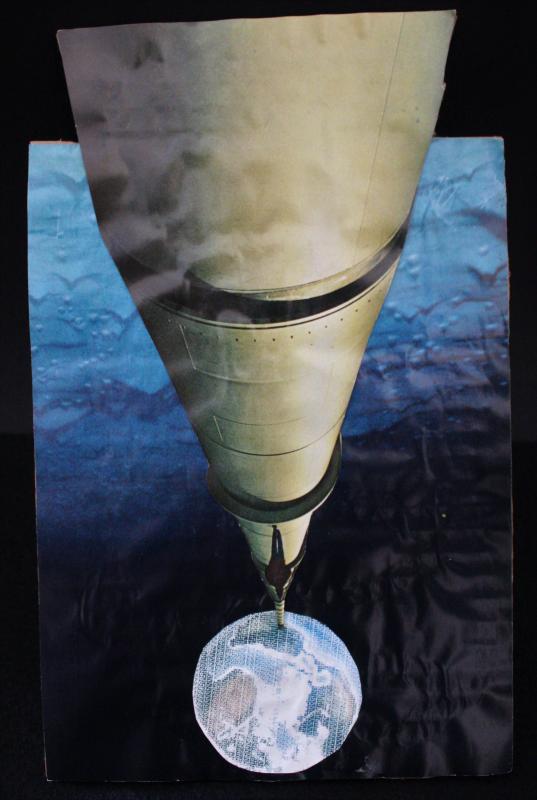Neglected Media, Part 2: Synthetic Landscapes of Food Production
April 19, 2019
Created by Hannah Riddle, Edited by Abdel Alfahham
Introduction, by Abdel Alfahham
Mid-twentieth century food production practices were defined by the dependence on industrial tools for improving the food production system. National Geographic Magazines from that era provide a great window into the attitudes of the American consumer and the food producer towards nature. Hannah Riddle uses pages from the magazine as a foundation for multidimensional and complex scenes reflecting back on social, cultural and economic phenomena. The collages are accompanied by factual summaries prepared by Hannan Riddle with the goal of anchoring the imaginative nature of the content with real-world data.
Hannah and I met last summer as interns at the Rodale Institute, a non-profit that conducts organic agricultural research, farmer training, and public education. As a communications intern, Hannah fluidly translated dense scientific research to relatable public outreach articles. Hannah’s ability to create highly creative art that is anchored in and reflective of real-world data-driven problems inspired this collaboration.
About Hannah
Hannah Riddle graduated from Chapman University with a BFA in Creative Producing and BS in Business Administration. She wrote, directed, and produced award-winning narrative short films and documentaries that spotlight her interests in gender equality, mental health, the environment, and agriculture. Currently, she is pursuing a career in the agriculture and food industry; she utilizes photography, videography and mixed media to illuminate the injustices she witnesses in this industry and in modern society.
About this project, by Hannah Riddle
This project was inspired by my ongoing research into policy and business practices of the American food production system from the 1950s through today. I exclusively utilized National Geographic Magazines from the 1950s-1970s era for this project. The magazines provided vivid imagery of natural and agricultural landscapes, while also hosting consumer product advertisements. Those advertisements often carried messages contradictory to the magazine's overall goal of celebrating the beauty of cultural and natural landscapes.
The misalignment of financial and environmental values has become commonplace in the modern American corporation. Such misalignment is evident in the profits-over-planet mindset and the propagation of endless consumerist consumption. Americans are as ill-informed about climate change as they are about the devastating impact their individual food choices have on the planet. Monopolistic agriculture and food corporations utilize branding and marketing techniques to deceptively capitalize on American values, obscuring the true environmental consequences of consumer choices. With these collages, I utilize juxtaposition -- the alignment and overlap of images as well as contrasting sizes and colors -- as a form of commentary, troubling the relationship between consumer choice and environmental and societal consequences.
Collages and Captions By Hannah Riddle

